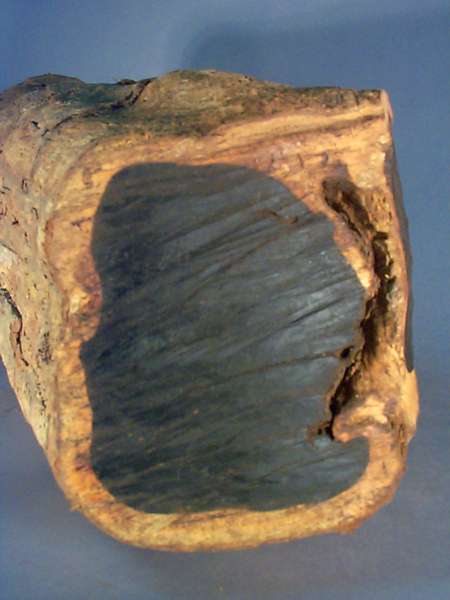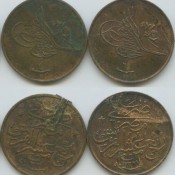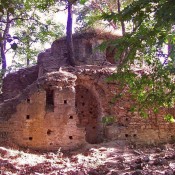The “NetWood” conference aims to study in a diachronic and
transdisciplinary way the economic and social networks around the
use of wood in Egypt and Nubia from the Predynastic to the Ottoman
period (AD 1914).
Different local wood species are available in Egypt. However, the
power imports certain species absent from its territory, in
particular coniferous wood and ebony wood, to meet its needs but
also to materialize its power within and outside Egypt. In
Egyptological studies, research into every aspect of wood has seen
renewed intensity in recent years, from species identification and
distribution, to the uses and crafting of the material. Nevertheless,
disciplinary compartmentalization still too often constitute a
barrier to communications – the only way to solve aporias and
broaden views. In this research environment, it is all the more
crucial to take advantage of this new convergence of interest, to
compare the latest research findings and to question preconceived
ideas. The sources available have never been so numerous, and the
prospects opened up by each approach are as varied as they are
complementary. Therefore, the dialogue between related disciplines,
from language science to archaeobotany, and the mutual illumination
of material and textual sources are set out as methodological
principles here. This interdisciplinary approach is indeed a
prerequisite for the diachronic analysis of the various issues
related to wood exploitation, whether economic, cultural or
landscape.
1. Identification of species: Egyptian and foreign wood
One of the priorities of this symposium is to work on the future
realization of a diachronic list of the main species exploited in
Egypt, which will present the woods under the dual aspect of the
botanical nomenclature and the vernacular name in use in the
different languages of the textual sources, from ancient Egyptian
to Arabic language. While this type of reference list is available
for the Pharaonic period, studies are not numerous for later periods,
thus preventing us from understanding the phenomena of continuity or
rupture from one period to the next. Moreover, the evolution of wood
analysis methods raises doubts over certain identifications proposed
in the 20th century concerning the woods of Pharaonic Egypt.
Simultaneously, the multiplication of archaeobotanical studies on
sites from the Greco-Roman and Islamic periods continues to extend
the reference corpus. The latter provides unprecedented support for
the examination of textual sources, which requires dealing with
changes in denomination that are sometimes difficult to reconcile
from one language to another – or even, within the same language,
from one region or era to another. In the light of the most recent
research data, the diachronic and transdisciplinary coherence of
the proposed identifications will therefore have to be reviewed.
In this context, for both local and imported wood, contributions
with recent findings on a particular species are encouraged. To
give two examples, the importance of cedar may plausibly be
revalued downwards, while the use and availability of Mimusops
laurifolia (Forsk.) Friis (persea, shwab) are difficult to evaluate
after the 6th century AD. In general, any study on the identification
of species exploited after the Arab conquest – particularly in the
texts – is particularly welcome, as is the presentation of any
dataset from clear archaeological contexts.
2. Wood circulation: production, distribution and consumption
(raw material)
The economic wood networks will be examined in the light of the
archaeological and textual data that will be presented at this
conference. The aim will be to understand the reasons – pragmatic
or cultural – that govern the selection of species. The contribution
of sources outside Egypt that would make it possible to provide
significant information on the origin of imported wood would be
particularly welcome. With regard to local species, we will consider
with the greatest interest the documentation likely to inform us
about the possible existence of forest areas that could have been
exploited on a large scale (production of construction wood or
coal), whether domesticated vegetation (acacia plantations under
“sustainable” management, for example) or no-domesticated flora
for example in the southern Eastern Desert.>From these regions
of production to places and activities of consumption, the
internal circulation of wood is based on social and economic
networks that remain poorly understood: the role and status of
economic actors, places of storage, the form of wood in transit,
means of transport, trade routes, are all avenues to be explored
for each period. Furthermore, papers that will deal with the
economic activities for which wood is ordered in large quantities,
with an emphasis on the consumption of construction or charcoal
wood (shipbuilding, forges, kilns etc.) will receive a particular
attention .
3. Woodworking: production workshops and use of worked objects
Finally, we seek to develop further debate around the questions
revolving around wood craftsmanship, highlighting the contributions
that make it possible to locate traditional woodworking centres and
to define the species prioritised in these workshops. Wherever
possible, contributors are asked to explore whether the choice of
a species is based on the availability of nearby wood, its own
qualities or its symbolic value.
To shed light on the contexts of use of worked wood, particularly in
the domestic and agricultural spheres, which have been until recently
relatively documented, we strongly encourage the presentation of new
collections of wooden objects, especially if they have been the
subject of xylological analysis, from reliable archaeological contexts
and museum collections (furniture, frames, tools and various equipment).
If necessary, a distinction should be made between locally produced
objects and those imported in an already processed form.
The guidelines above are only indicative of avenues for reflection,
to be developed in discussion during the symposium. This call is
open to any contribution likely to bring new elements on the
subject, whatever the approach taken, the historical period
concerned or the language of the corpus studied.
To meet the requirements of a transdisciplinary audience, care
should be taken to clarify the scope of the study, ensuring
communication accessible to all, and, as far as possible, to
seek to establish links with other disciplinary fields. In order
to facilitate this work, a reference bibliography will be sent
to selected participants who so wish.
Practical information
Organizing Committee: G. Eschenbrenner-Diemer (Marie Curie Fellowship
(UCL)/UMR 7041, ArScAN), J. Auber de Lapierre (EPHE), V. Schram
(Collège de France) et R. Seignobos (Ifao).
Place : Institute of Archaeology, University College de Londres (UCL).
Date of the conference: 18-19 june 2020.
Deadline for submitting abstracts: 31 of October 2019.
Proposals for papers (400 words maximum) should be sent before
31 October 2019, in English or French, which are the languages
selected for this conference, to the following address:
[email protected]. A short presentation of the author, including
his/her title and institutional affiliation should be attached.
Each paper is expected to last 20 minutes, followed by 10 minutes
of discussion. After evaluation of the abstracts, participants
will be informed of the selection of their intervention at the
beginning of January 2020





